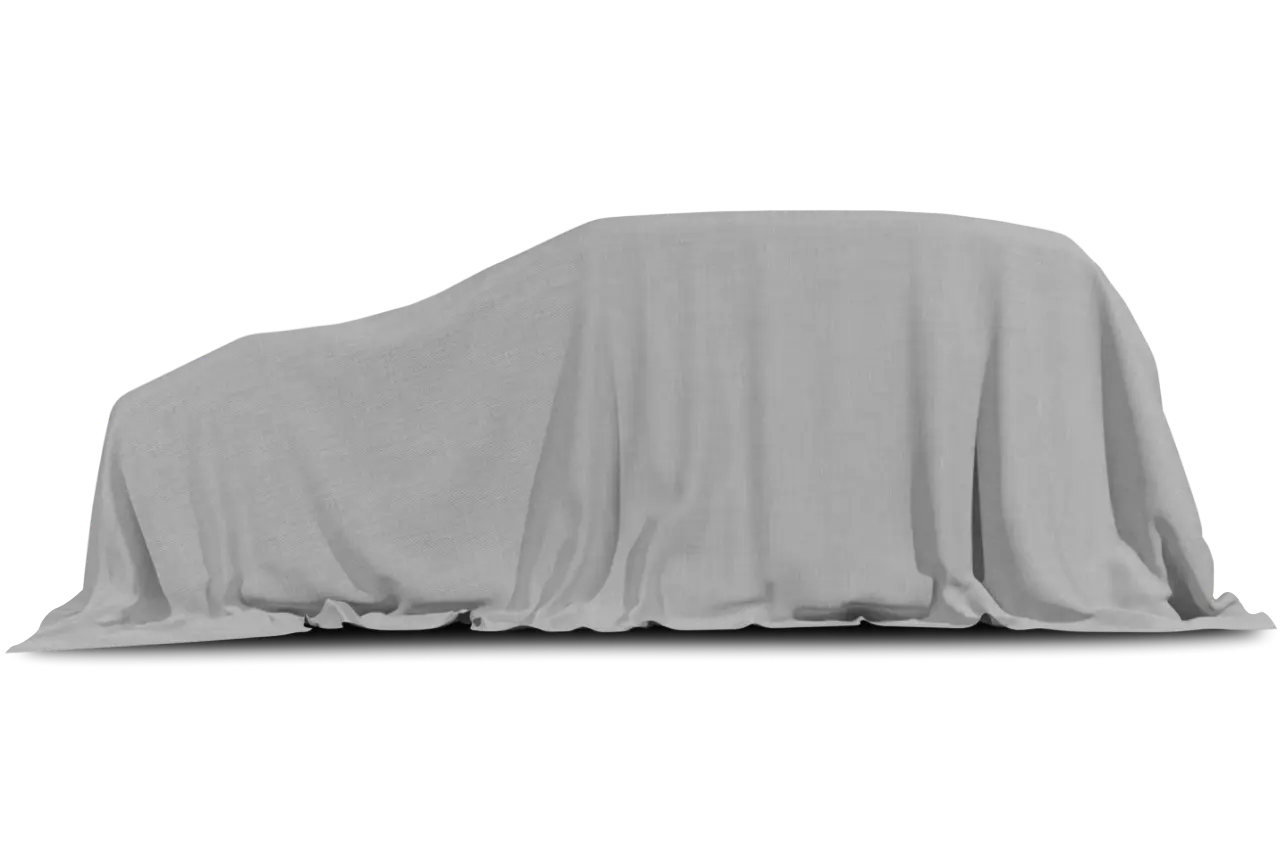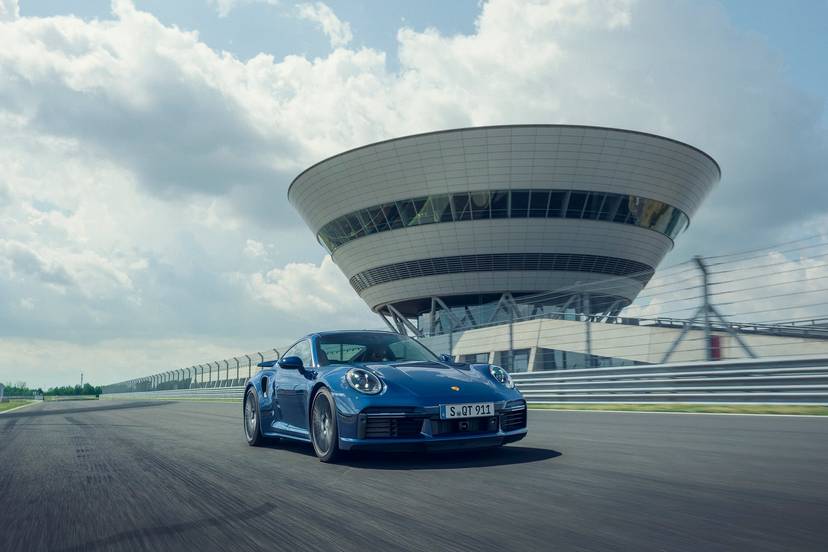
Many years ago, I stopped reading reviews of the Porsche 911, as they all seemed to be derived from the same common set of adjectives: It’s amazing, it’s incredible, it’s perfection incarnate, it’s the only sports car you’ll ever want or need — if you can afford one.
But then I got my chance to drive one. As cliche as it may sound, you never forget your first Porsche 911 experience. Mine came in 1996, and I stalled the thing repeatedly trying to get used to the motion of the floor-mounted clutch. Since then, I’ve lost count of the 911s I’ve been fortunate enough to pilot, but one thing sticks in my memory: They only keep getting better — and more expensive.
That Magic Moment
Sitting behind you in the surprisingly comfortable, perfectly sized cockpit of the 911 Turbo S is a twin-turbocharged 3.8-liter flat-six engine humming out 580 horsepower. That’s 40 hp more than the regular 911 Turbo, and it’s good enough to propel the Turbo S from zero-to-60 mph in just 2.8 seconds, Porsche says. All 911 Turbo models have the Sport Chrono Package standard for 2018, which is key to this performance. It involves four selectable modes that increase boost to the turbochargers, pumping torque up from the normal 516 pounds-feet to a peak of 553 pounds-feet. The mode selector has moved from the center console to a dedicated knob and button on the GT Sport steering wheel, which also now includes what all “Knight Rider” fans will recognize as a “Turbo Boost” button.
That magic little button in the center of a diminutive knob, called the Sport Response button, serves as a shot of adrenaline to the 911 Turbo S. Regardless of what mode you’re in (Normal, Sport or Individual) when you push it, the car instantly pops into Sport Plus mode for 20 seconds. The transmission and throttle program go into special aggressive modes, the suspension tightens up to its maximum setting, the steering firms up, the turbochargers undergo a number of temporary performance changes and the transmission drops a gear. This is perfect for the sudden urges you may feel when entering a highway on-ramp, or passing on a tight two-lane road with limited distance, or anywhere you decide you suddenly need racecar behavior right freakin’ now. At the end of your 20 seconds, which counts down on a timer on the dash, you return to whatever mode you were in before. It’s nothing short of absolutely thrilling. This is the giggle button.
Without all that crazy electronic boosting, the 911 Turbo S is calm and comfortable, a perfect grand tourer. You can drive it all day long at five-tenths effort and be rewarded with a stylish, sedate cruiser that won’t upset your mother-in-law if you bring her along for a ride. The ride is firm but not overly stiff, with the Porsche Active Suspension Management system doing an amazing job of damping out road imperfections despite its massive 20-inch wheels and performance-rated tires.
The only transmission offered in the Turbo S is the PDK dual-clutch automatic, which is fine. It shifts faster than any human can and seems to intuitively know what gear it needs to be in given the driver’s moment-by-moment demand. It only gets better and more tuned-in to what the driver wants as you move through various drive modes. Motive force is delivered to all four wheels through a standard all-wheel-drive system, which makes sense given the car’s prodigious power and rear-engine balance characteristics.
A Classic Cabin Meets Today’s Tech
The exterior styling looks much as it has since the original 911, but the interior has shown more progress toward modernization. There are still some classic elements that remain, however: Five round gauges face you through the steering wheel, but one of them is now a digital screen that’s reconfigurable to a number of options, including a navigation screen, Sport Chrono timers, trip information and more.
To the right of that is a wide center console laden with buttons. There’s no touchscreen overload here; all the critical components, systems and gadgets have dedicated buttons, but they’re arranged in a way that makes it easy to find what you need. Nothing is hidden from view or hard to find. There are, however, a number of dead switch blanks — glaring reminders that despite the fact that you’re piloting a $200,000 car, there are still options you’re not getting. The blanks are artfully integrated into the center console in a way that tries to minimize their omission, but it’s still a painful reminder that Porsche makes almost all its options an a la carte affair.
To that point, it’s also astonishing that there are basic items this car doesn’t come with, such as keyless entry and push-button start. You still need to dig a fob out of your pocket to unlock the doors, then insert that key into the dash and twist to start the engine. In a vehicle this new — which includes a fully updated multimedia touchscreen equipped with Apple CarPlay — this is a bizarre omission, but one that’s indicative of Porsche’s longtime philosophy of extreme customization. You can order just about any Porsche exactly how you want it, down to the minutiae of the options list. It’s one of the reasons Porsches are so expensive — a staggering number of build combinations introduces expensive complexity in the factory, and that cost is passed on to consumers.
Aside from the quirks of the build sheet, the 911’s interior is comfortable and decently spacious, and it features excellent outward visibility. Yes, you sit low in the car, which can make for some difficulty seeing overhead stoplights if you creep forward too far at intersections, but the relatively upright windshield and large side windows help maximize your view forward better than competitors like the Mercedes-AMG GT or Jaguar F-Type. Craftsmanship is excellent, materials quality is outstanding, and all the buttons and switches move with typical German precision. There’s a delicate quality to much of the interior, a sense that the size of the controls has been optimized for space and weight. Even the steering wheel feels tidy compared with monsters like the AMG GT. The rim is thin, the spokes seem minimalist and even the overall diameter seems more compact than most competitors. It lends to the overall sports car feel of the 911 and gives you a sense that function was weighted equally with form in its design.
Front-seat comfort is excellent, and ingress and egress isn’t much of a challenge despite the car’s low stance. The backseat is best described as “vestigial” — it’s not suitable even for children, as any child small enough to fit there should instead be buckled into a child-safety seat. The 911 is a 2+2, definitely not a four-seater, despite how many seat belts there are.
Trunk space is acceptable for a car like this, with a deep well up front that can accommodate a single big roll-aboard suitcase or a couple of duffels. The space behind the front seats doubles as a useful storage area for parcels, but there’s a distinct lack of storage space for things like personal electronics. As with previous 911s, the cupholders are an afterthought — fold-out affairs stored in the passenger-side dashboard that look about as sturdy as a plastic lawn chair. I certainly wouldn’t put an open beverage in them, precariously perched several inches above the center console.
Limited Safety, for a Price
Nearly all the extra safety systems beyond the required antilock brakes and stability control are extra-cost items on the 911 Turbo S. Adaptive cruise control and blind spot warning aren’t standard even at this top trim level, and features like autonomous braking with pedestrian warning and lane keep assist aren’t even offered. Neither the National Highway Traffic Safety Administration nor the Insurance Institute for Highway Safety have crash-tested the Porsche 911, but this isn’t unusual for a low-volume sports car.
Top of the Line and Priced Accordingly
The 911 Turbo S is meant to be Porsche’s ultimate everyday 911. There are versions that are more track-oriented, like the GT3 or GT2 RS, but for one that’s meant to do primary duty as a daily driver and grand tourer with only rare visits to a racetrack, the Turbo and Turbo S are the go-to weapons of choice. Starting price for this 2018 model is an eye-popping $191,750, including destination. My car had only two options — lane change assist and ventilated seats — bringing its total up to $193,440. That’s a stunning sum for a car that doesn’t have keyless entry or a sunroof. Start adding all the customizable options for a 911 Turbo S and you’ll be looking at a quarter-million-dollar price tag in short order. The 911 model covers a staggering range of prices, with the base 911 starting at $100,000 less than the Turbo S and the range-topping GT2 RS starting at $100,000 more.
But that’s OK, as the competition costs just as much. If you want something with the capabilities of a 911 but very different aesthetics, slide over to a Mercedes-Benz dealer and have a look at the AMG GT coupe and convertible. With a big V-8 up front, just two seats and proportions that couldn’t be more different, it’s an alternative take on the expensive personal luxury sports car. Jaguar’s F-Type is less expensive in its base models but can easily approach the 911 Turbo’s top price tag in higher-spec SVR versions. If you’re less concerned about badge cachet at the valet, you can opt for a Nissan GT-R, which undercuts the Porsche on price but easily keeps up with it on a racetrack or canyon road. Compare all four vehicles here.
We’re likely to see a new Porsche 911 in the next year or two, which will hopefully address the lacking safety systems in this one. As for the rest of the car, there are few vehicles on the planet that can match the 911 Turbo S’ combination of sheer ability, comfortable surroundings and earned pedigree. There’s a reason any 911 is an aspirational vehicle for so many auto enthusiasts — it delivers on all fronts better than just about any other sports car out there.
Editor’s note: This story was updated Oct. 24, 2018, to reflect that Android Auto is not available.
Cars.com’s Editorial department is your source for automotive news and reviews. In line with Cars.com’s long-standing ethics policy, editors and reviewers don’t accept gifts or free trips from automakers. The Editorial department is independent of Cars.com’s advertising, sales and sponsored content departments.










































